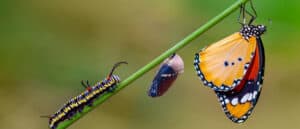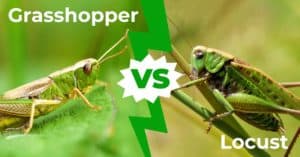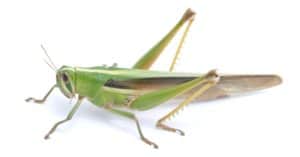Often regarded as a lucky symbol, grasshoppers are one of the oldest types of animals in the world, having first appeared during the Triassic period 250 million years ago. They are herbivorous insects and there are more than 11,000 species of them worldwide, with many more thought to be as yet undiscovered.
But with such incredible diversity, what are the largest grasshoppers in the world? From grasshoppers that look like butterflies to ones that look like leaves, their appearance and their size can be vastly different between species.
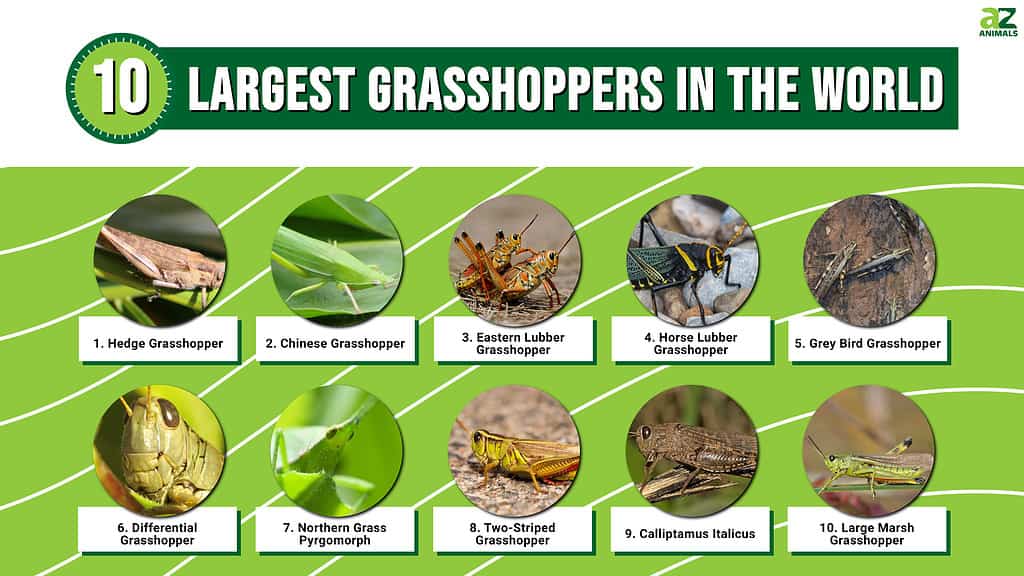
Here we have ranked the 10 largest grasshoppers in the world by length.
#10 Large Marsh Grasshopper
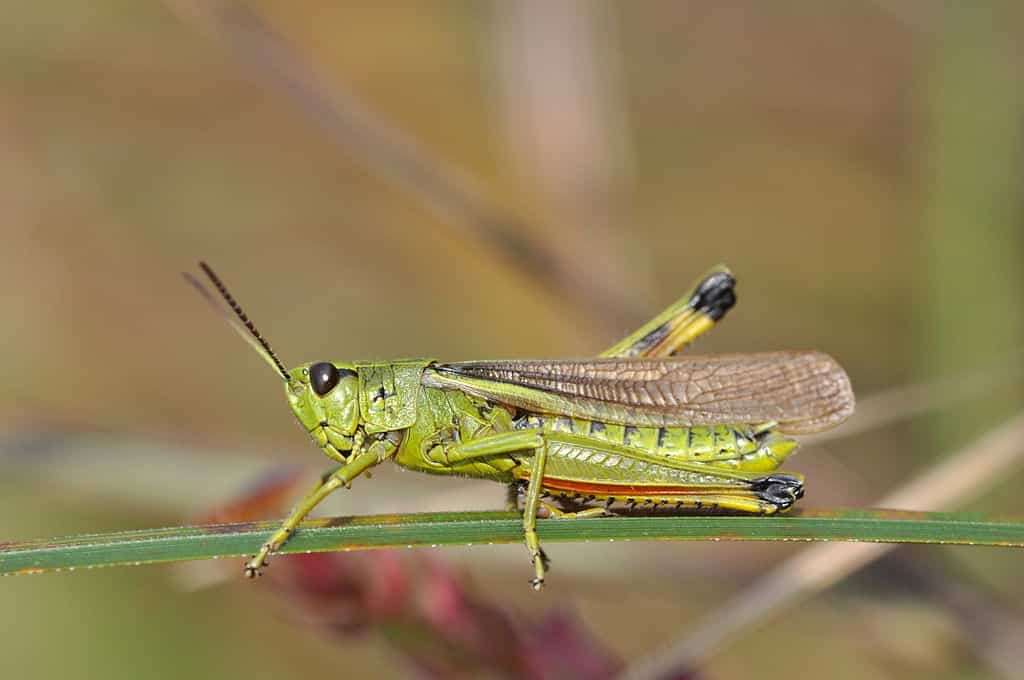
The large marsh grasshopper can grow up to 1.5 inches
©Aiwok, CC BY-SA 3.0 – License
The large marsh grasshopper is the largest grasshopper in the UK and is found in marshland and meadows that are prone to being wet. They prefer to eat rushes and grass at the edge of the marshes where they also lay their eggs. Large marsh grasshoppers are now only found in the New Forest and parts of Dorset, populations elsewhere in the UK have declined due to improved land drainage. Males can reach lengths of up to 1 inch while females are much larger and can grow to be around 1.5 inches long. While most are yellow or brown, they can occasionally be a vibrant pink color.
#9 Calliptamus Italicus
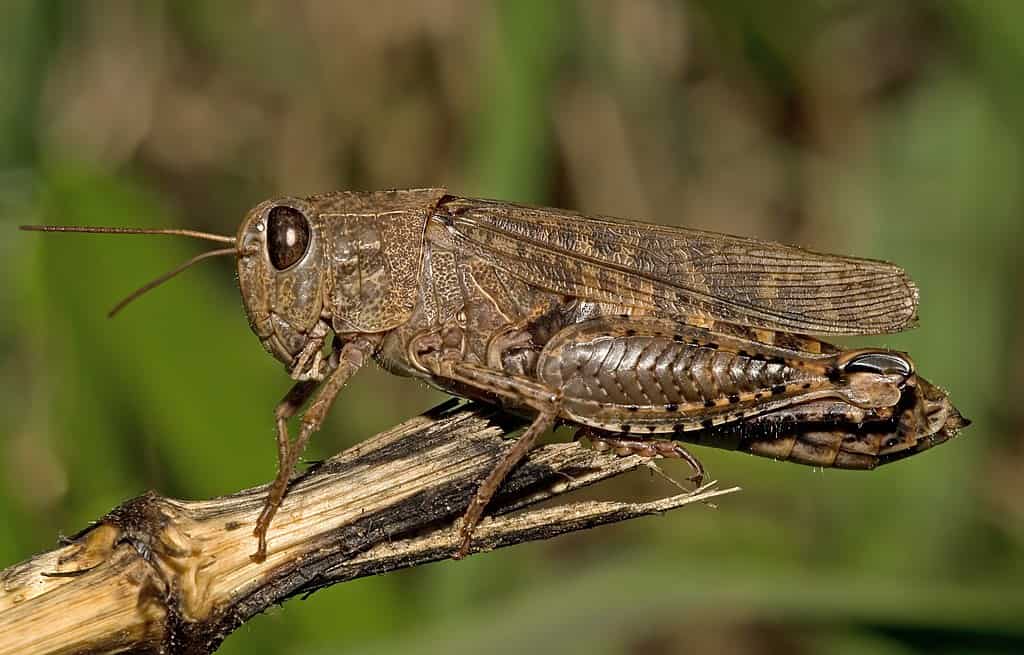
Also known as the Italian locust, this is a species of short-horned grasshopper.
©Kulac, CC BY-SA 2.5 – License
Next on the list is Calliptamus Italicus, which is a medium-sized grasshopper that is widespread across Central Asia, North Africa, and Western Europe. They can reach lengths of up to 1.02 inches for males and 1.57 inches for females. Calliptamus Italicus is a type of short-horned grasshopper, which has a shorter antenna than other species do. Their bodies are often grey or brown, and their wings are usually red or even pink. Like all grasshoppers, they are a herbivore and therefore only eat plants, usually eating wild plants or sometimes crops.
#8 Two-Striped Grasshopper
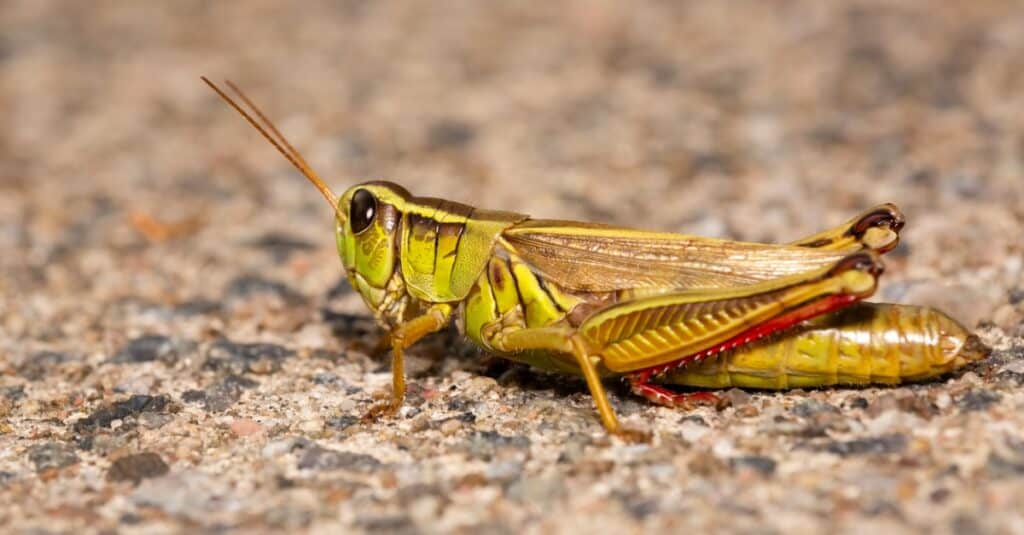
Two-striped grasshoppers live in Canada
©iStock.com/Luc Pouliot
The two-striped grasshopper gets its name from the two pale stripes that run from their eyes to the tips of their front wings. Their bodies are usually either brown or green and they also have a black stripe down their back legs. Two-striped grasshoppers can reach lengths of 1 to 1.6 inches and are found mostly in North America and Canada. They eat a wide range of plants and crops and are classed as a pest due to the damage that they cause. However, they do have quite a few predators, both in their egg stage and as adults, with small parasites, small mammals such as rats, and birds all preying on them.
#7 Northern Grass Pyrgomorph
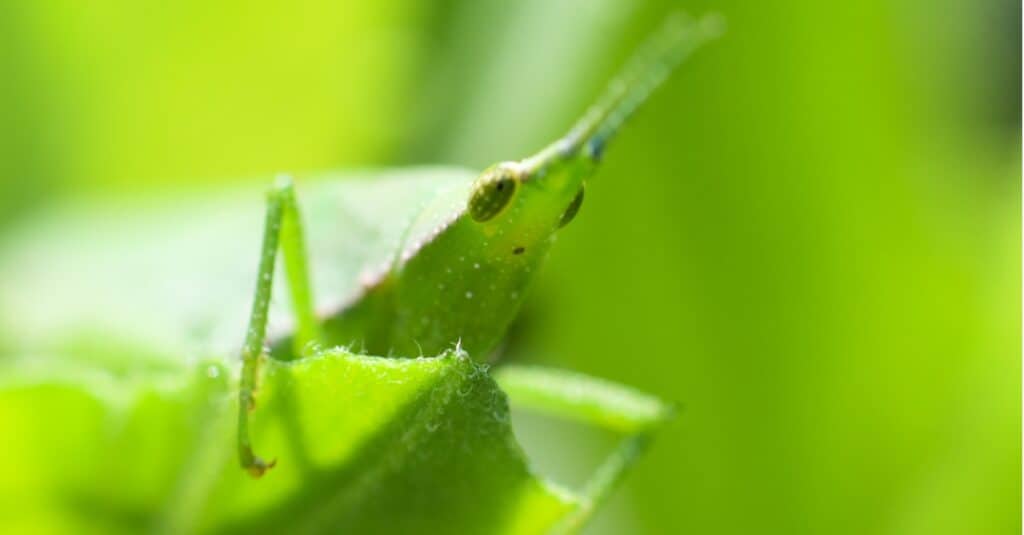
The northern grass pyrgomorph has a unique appearance!
©iStock.com/Sudhakar Bisen
Also sometimes known as the vegetable grasshopper, these grasshoppers can reach lengths of 1.2 to 1.6 inches. They are usually found in tropical and coastal areas of Australia and can also often be found in gardens in those areas. They are completely green and their bodies narrow at each end, often giving them the appearance of a leaf. The appearance of northern grass pyrgomorphs is particularly helpful as they do not attempt to get away from predators, but instead rely on their camouflage to help them remain undetected. These grasshoppers prefer to eat broad, leafy plants and generally do not do much damage to the areas they frequent.
#6 Differential Grasshopper
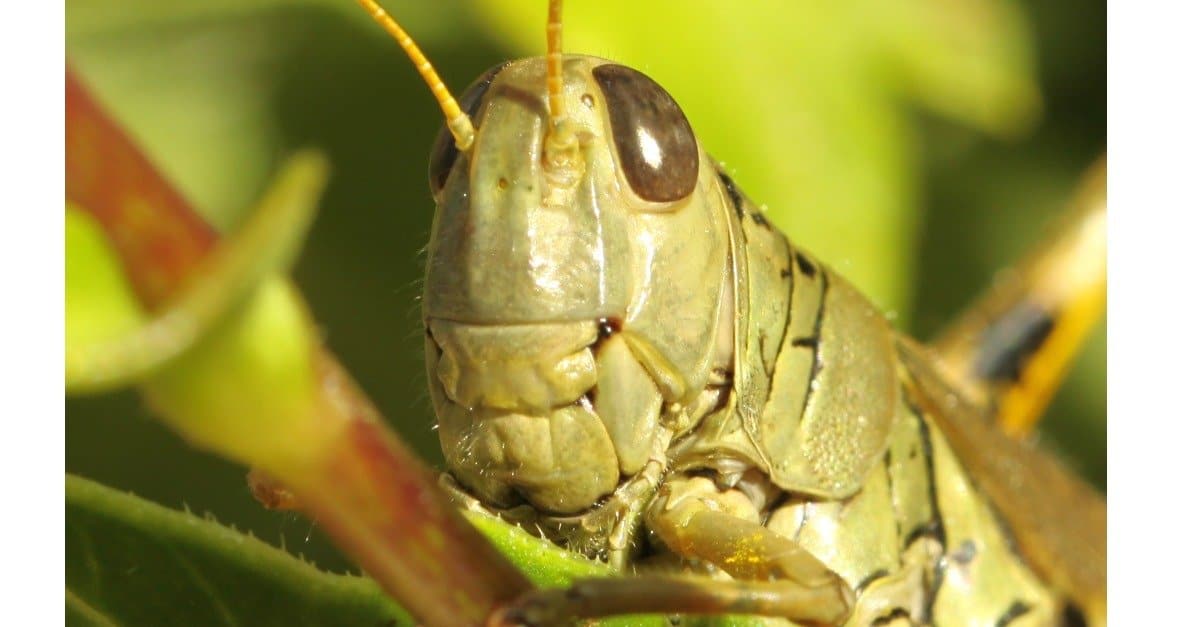
As this grasshopper ages, its color gets darker, making it easier to differentiate between the younger and older of the species.
©iStock.com/nrpphoto
Differential grasshoppers are large grasshoppers, with males reaching 1.5 inches and females almost 2 inches in length and they are widespread throughout Canada, Central America, and Mexico. They are usually brown or green with a red or yellow antenna. Differential grasshoppers are different to other types of grasshoppers as their color gets darker as they get older, so it’s easy to tell which ones are younger and which are older. They often feed in swarms, which means that they cause a lot of damage to the crops that they eat and so are largely classed as a pest. Young grasshoppers (nymphs) of this species mature much quicker than a lot of other grasshoppers and reach adulthood only 32 days after hatching.
#5 Gray Bird Grasshopper
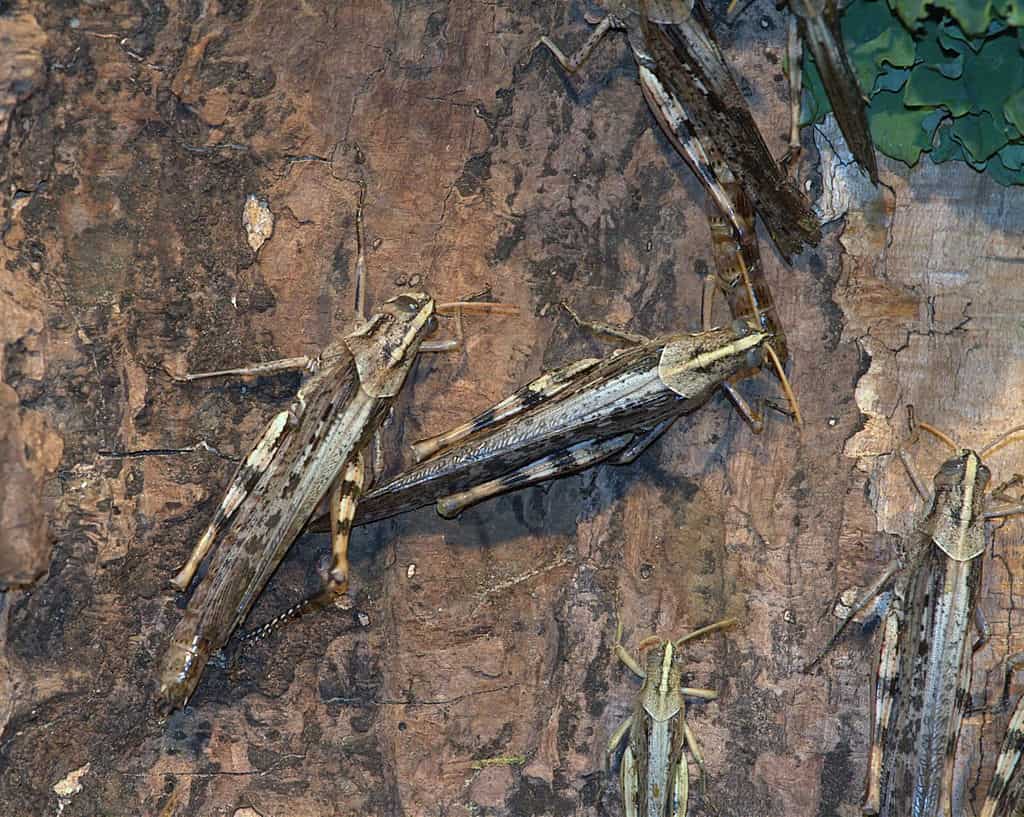
Also known as the grey grasshopper, this is a close relative of the
desert locust
which is in the same genus.
©Greg Hume/CC BY-SA 3.0 – License
The gray bird grasshopper, also known as the vagrant grasshopper, is found across South America. They are highly adaptable and can live in a range of habitats, including deserts, mountains, and forests. They have a gray, spotted appearance and females can reach lengths of around 2.6 inches with males being significantly smaller at around 1.8 inches long. Gray bird grasshoppers are known as being one of the best fliers out of all grasshoppers and can fly for long distances, even across oceans. They eat a wide variety of plants and vegetation and also crops such as wheat, oats, peanuts, and rye.
#4 Horse Lubber Grasshopper
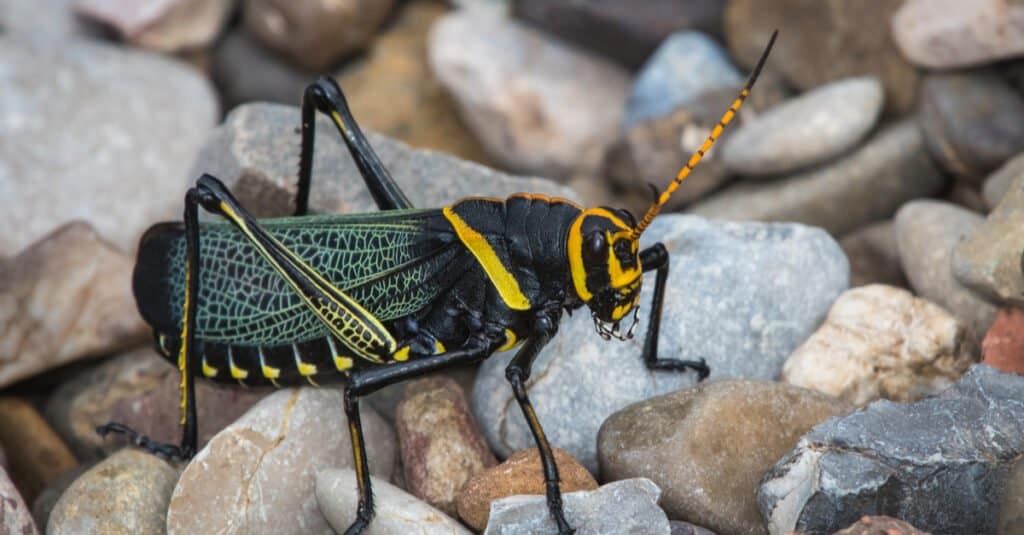
Lubber grasshoppers have a unique appearance!
©Jim and Lynne Weber/Shutterstock.com
The horse lubber grasshopper is a large grasshopper that can reach a length of 2.75 inches and is found mainly across South America and Mexico. They have a distinctive appearance, with a black body, black and yellow front wings, and red rear wings. Horse lubbers also have an orange antenna and orange markings on their heads. Most horse lubber grasshoppers cannot fly, instead, they rely on their long hind legs which give them the ability to jump long distances. They also have a defense mechanism as they can produce toxins that they spray which are harmful to any would-be predators.
#3 Eastern Lubber Grasshopper
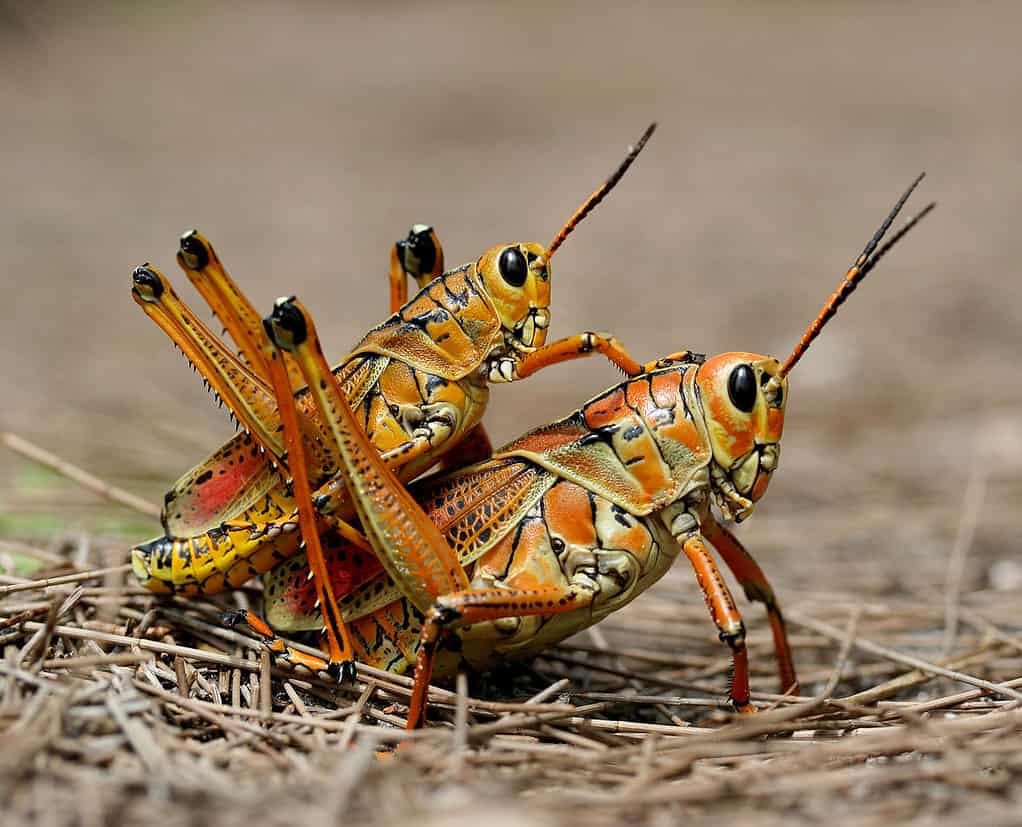
These grasshoppers have very small wings which do not allow them to fly.
©Tomfriedel / CC BY 3.0 – License
The eastern lubber grasshopper is also commonly known as the Florida lubber grasshopper and is found in the southeast and Central America, particularly in Florida, Arizona, Georgia, and Texas. Males can reach sizes of up to 2.15 inches while females are slightly larger and can reach around 2.75 inches, however, despite their large size they only have very small wings which are too small for them to fly with. Eastern lubber grasshoppers aren’t particularly good at jumping either so they usually walk everywhere instead, which is why they have to rely on their defense mechanisms to protect themselves from predators.
One of the things that help their defense is their bright colors which are used to signal to predators that they can protect themselves. They are usually black with red, orange, or yellow markings which gives them a striking appearance. They also hiss loudly at other animals and produce a thick foam that has a foul smell and taste. Eastern lubbers are found in swamps, woodland, and ditches and eat a range of broad-leafed plants.
#2 Chinese Grasshopper
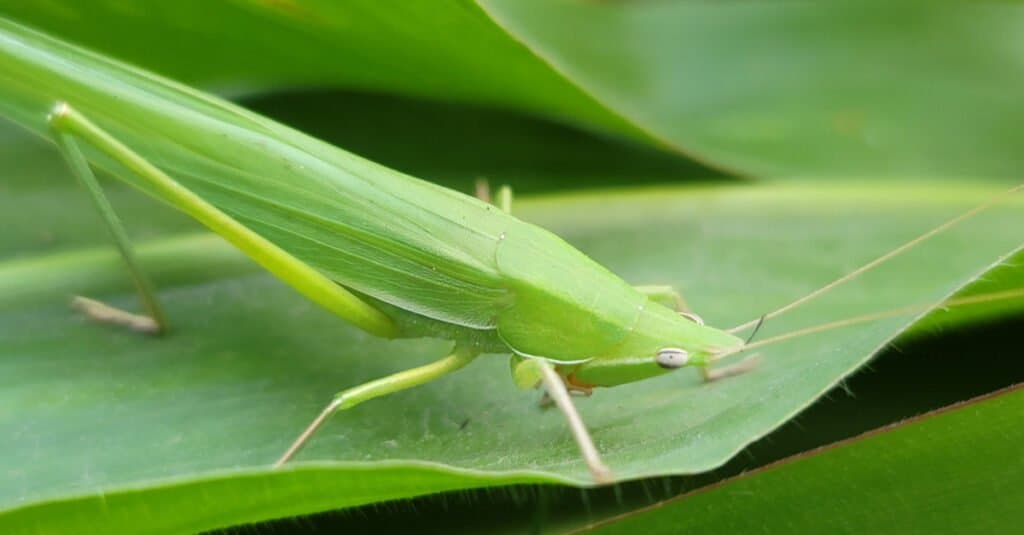
Chinese grasshoppers can reach more than 3 inches in length!
©Jrs Jahangeer/Shutterstock.com
The Chinese grasshopper is widespread across China, Japan, and Indonesia. Females can reach a length of around 3 inches while males are only 2 inches long. They are usually green or brown and have wings that are colorless. Chinese grasshoppers have extremely long legs which help them to jump long distances in one leap. They are often eaten across China and are also thought to be very nutritious as poultry food. However, they cause a lot of damage to crops such as sugar cane, rice, and cotton and are known as a pest species.
#1 Hedge Grasshopper
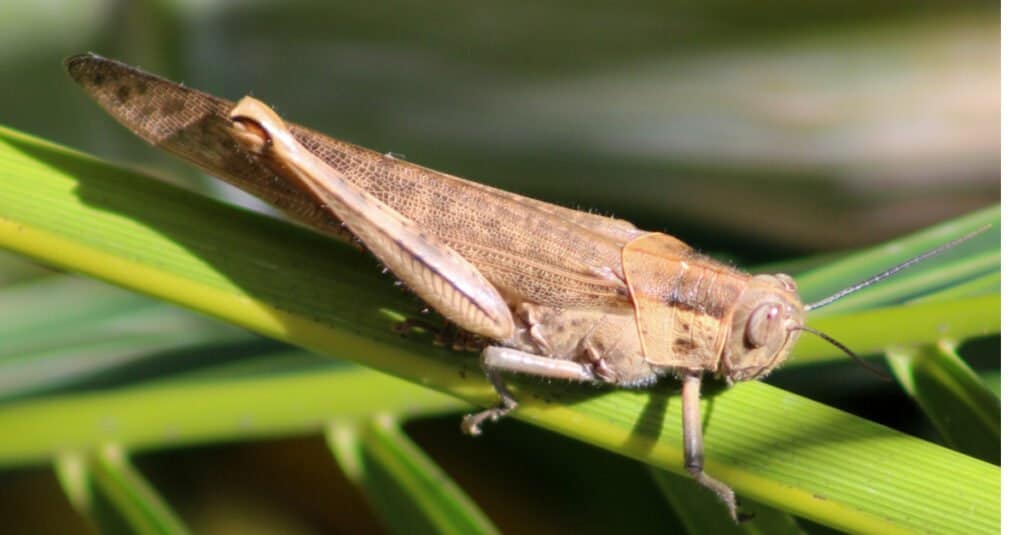
The hedge grasshopper is endemic to North Australia
©Cassandra Madsen/Shutterstock.com
The largest grasshopper in the world is the hedge grasshopper (Valanga irregularis), which is also known as the giant grasshopper. They are found in Australia, where they prefer tropical and subtropical regions, often in forests or grasslands. Females usually reach a size of around 3 inches, although some have been known to reach 3.5 inches, while males are much smaller and only reach 2.15 inches. They have a wide variety of colors and markings with grey or green bodies being found most frequently, however, their wings can be a range of dots or stripes in grey, green, orange, or red. Hedge grasshoppers are usually solitary and generally don’t form swarms, so therefore don’t cause much damage to plants or crops and are not classed as a pest species.
Summary Of The 10 Largest Grasshoppers In The World
| Rank | Grasshopper |
|---|---|
| 1 | Hedge Grasshopper |
| 2 | Chinese Grasshopper |
| 3 | Eastern Lubber Grasshopper |
| 4 | Horse Lubber Grasshopper |
| 5 | Grey Bird Grasshopper |
| 6 | Differential Grasshopper |
| 7 | Northern Grass Pyrgomorph |
| 8 | Two-Striped Grasshopper |
| 9 | Calliptamus Italicus |
| 10 | Large Marsh Grasshopper |
Honorable Mention: Other Large Grasshoppers
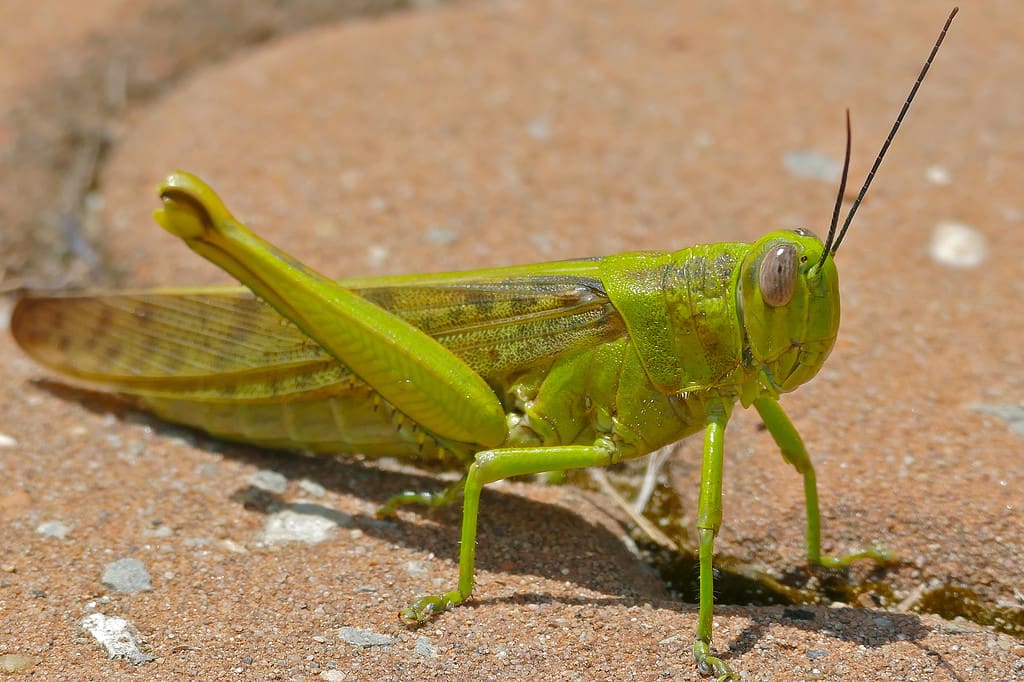
Depending on their sex, the
Javanese
Grasshopper can grow to around three inches in length.
©Bernard DUPONT from FRANCE, CC BY-SA 2.0 <https://creativecommons.org/licenses/by-sa/2.0 – License
- Tricolored Grasshopper (Paracinema tricolor) – this species of band-winged grasshopper can be found in Africa, Europe, and the Middle East, and contains four subspecies. They range in size from about 2.15 inches to 2.35 inches and are green in color with portions of brown throughout their bodies.
- Javanese Grasshopper (Valanga nigricornis) – also referred to as the Japanese bird grasshopper, this species is found in Southeast Asia and is endemic to the following areas: Brunei, Cambodia, Indonesia, Malaysia, Papua New Guinea, the Philippines, Singapore, the Solomon Islands, Thailand, and Vietnam. They can range in size, with the larger females reaching up to three inches, and males reaching up to slightly over two inches. They contain more than 20 subspecies that are native to different islands in the area.
- Soldier Grasshopper (Chromacris speciosa) – this is a species of lubber grasshopper belonging to the genus Chromacris of which there are nine species. They can be found in Mexico, Central America, South America, in northeastern Brazil. They can range in size from about 2 inches to 2.5 inches. The Chromacris species are presumed to be toxic, as they are bright, with the colors indicative of aposematism, where they act as a warning to predators that they are not prey. Their bodies are deep green with legs that are green and yellow striped.
The photo featured at the top of this post is © iStock.com/nrpphoto
Thank you for reading! Have some feedback for us? Contact the AZ Animals editorial team.



